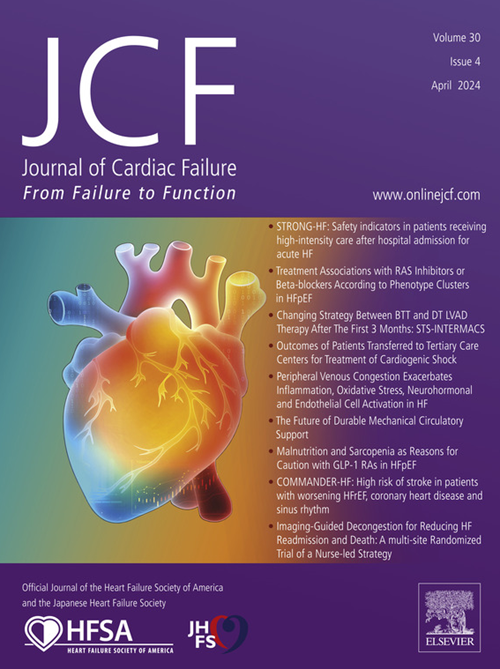继发性二尖瓣反流:以经皮介入治疗为重点的最新综述。
IF 6.7
2区 医学
Q1 CARDIAC & CARDIOVASCULAR SYSTEMS
引用次数: 0
摘要
继发性二尖瓣反流(SMR)与死亡率和心衰住院率增加有关。对伴有二尖瓣反流的心衰患者的管理非常复杂,需要多学科心脏团队共同协作。以指南为指导的药物疗法仍然是基本疗法,但仍有一部分患者存在二尖瓣反流。在过去的十年中,经导管边缘到边缘修补术(TEER)已被证明可以改善在接受药物治疗后仍有症状的 SMR 患者的存活率。随着时间的推移,新一代设备的技术进步、成像技术的改进以及操作者专业知识的提高共同促进了该手术安全性和有效性的提高。目前正在研究各种新兴的经导管二尖瓣修复和置换设备,它们可能会为不符合 TEER 条件的患者提供更优越、互补或协同的治疗方案。本综述概述了有关 SMR 诊断和目前可用的经导管二尖瓣介入治疗的最新进展,并介绍了治疗 SMR 的现代方法。本文章由计算机程序翻译,如有差异,请以英文原文为准。
Secondary Mitral Regurgitation: Updated Review with Focus on Percutaneous Interventional Management
Secondary mitral regurgitation (SMR) is associated with increased mortality and heart failure hospitalizations. The management of heart failure patients with SMR is complex and requires a multidisciplinary Heart Team approach. Guideline-directed medical therapies remain fundamental, yet in a proportion of patients SMR persists. In the past decade, transcatheter edge-to-edge repair (TEER) has been shown to improve survival in patients with SMR who remain symptomatic despite medical therapy. Technical advancements across newer generations of devices, improved imaging, and greater operator expertise have collectively contributed to the increased safety and efficacy of this procedure over time. Various emerging transcatheter mitral valve repair and replacement devices are currently under investigation and may offer superior, complementary or synergistic treatment options in patients ineligible for TEER. This review provides a state-of-the-art overview regarding the diagnosis of SMR, and currently available transcatheter mitral valve interventions and describes a contemporary approach to the management of SMR.
求助全文
通过发布文献求助,成功后即可免费获取论文全文。
去求助
来源期刊

Journal of Cardiac Failure
医学-心血管系统
CiteScore
7.80
自引率
8.30%
发文量
653
审稿时长
21 days
期刊介绍:
Journal of Cardiac Failure publishes original, peer-reviewed communications of scientific excellence and review articles on clinical research, basic human studies, animal studies, and bench research with potential clinical applications to heart failure - pathogenesis, etiology, epidemiology, pathophysiological mechanisms, assessment, prevention, and treatment.
 求助内容:
求助内容: 应助结果提醒方式:
应助结果提醒方式:


